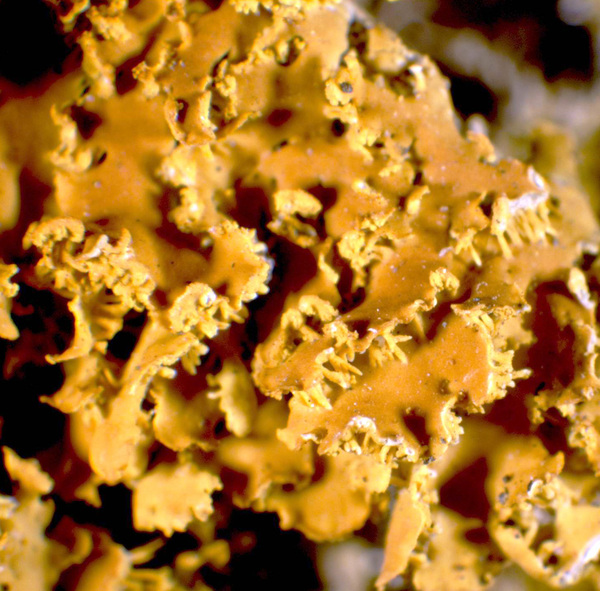Xanthomendoza ulophyllodes (Räsänen) Søchting, Kärnefelt & S.Y. Kondr.
Mitt. Inst. allg. Bot. Hamburg, 30-32: 238, 2002. Basionym: Xanthoria ulophyllodes Räsänen - Ann. Acad. Sci. Fenn., 34, 4: 105, 1931.
Synonyms: Oxneria ulophyllodes (Räsänen) S.Y. Kondr. & Kärnefelt; Parmelia parietina var. fibrillosa Schaer.; Physcia controversa var. stenophylla A. Massal.; Xanthoria stenophylla (Harm.) B. de Lesd.; Xanthoria substellaris var. isidiigera Räsänen
Distribution: N - Frl (TSB), Ven (Lazzarin 2000b, Nascimbene & Caniglia 2003c), TAA (Nascimbene & al. 2007b, Nimis & al. 2015), Lomb, Piem (Castino 2004, Isocrono & al. 2004, 2005b, 2007, Isocrono & Piervittori 2008, Matteucci & al. 2010), VA (Ongaro & al. 2022), Emil (Boccardi & al. 2003, Fariselli & al. 2020), Lig (LD- 1088800). C - Tosc (Benesperi & al. 2007).
Description: Thallus foliose, orange, forming up to 3.5 cm wide rosettes which often coalesce to cover much larger surfaces. Lobes loosely adnate to semi-erect, dorsiventral, flattened at least in lower part, up to 5(-8) mm long, 0.3-0.5(-1.5) mm wide, the ends ascending, lip-shaped and blastidiate on lower surface, the blastidia 20-30 µm in diam, often gathered into 40-50(-60) µm wide conblastidia. Medulla white; lower surface white, smooth to somewhat wrinkled, with abundant, white to yellow rhizines. Apothecia rare, lecanorine, stipitate, with an orange disc and an often blastidiate thalline margin. Epithecium orange-brown, K+ red, c. 10 µm high; hymenium colourless, 20-80 µm high; paraphyses simple or sparingly branched; hypothecium colourless to pale brown, 25-70 µm high. Asci 8-spored, clavate, functionally unitunicate, apically thickened with a broad internal beak, the inner part of apex and external cap I+ blue, Teloschistes-type. Ascospores 2-celled, polarilocular, hyaline, ellipsoid, narrowed at apex, 10.5-15(-16) x 6-7(-8) µm, the equatorial thickening (“septum”) 3.5-5 µm. Pycnidia common, immersed or slightly projecting, darker orange than thallus. Conidia bacilliform, 2.5-4 x 1-1.5 µm. Photobiont chlorococcoid. Spot tests: thallus and apothecia K+ dark red, C-, KC-, P-. Chemistry: parietin (major), fallacinal (major), emodin, teloschistin (major) and parietinic acid.Note: on isolated, well-lit trees, often near the base of the trunks along roads, formerly often confused with X. fallax, X. fulva, and X. oregana.
Growth form: Foliose, narrow lobed
Substrata: bark
Photobiont: green algae other than Trentepohlia
Reproductive strategy: mainly asexual, by soredia, or soredia-like structures (e.g. blastidia)
Subcontinental: restricted to areas with a dry-subcontinental climate (e.g. dry Alpine valleys, parts of Mediterranean Italy)
Commonnes-rarity: (info)
Alpine belt: absent
Subalpine belt: absent
Oromediterranean belt: absent
Montane belt: very rare
Submediterranean belt: rare
Padanian area: absent
Humid submediterranean belt: absent
Humid mediterranean belt: absent
Dry mediterranean belt: absent
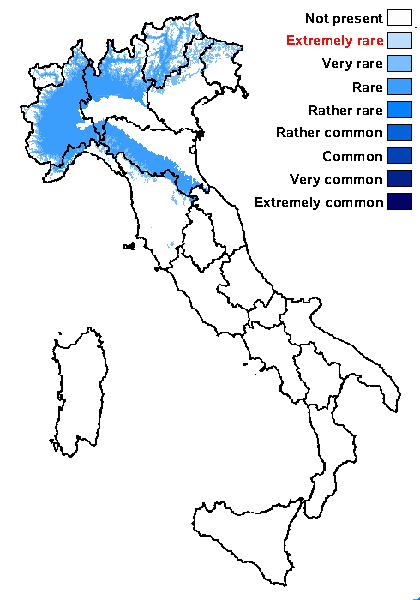
Predictive model
Herbarium samples
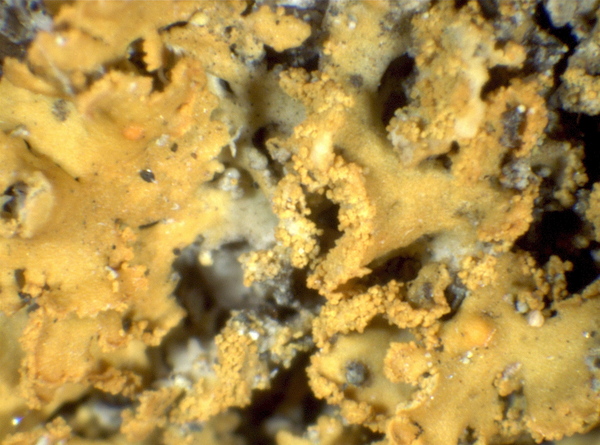

P.L.Nimis; Owner: Department of Life Sciences, University of Trieste
Herbarium: TSB (37026)
2008.02.25
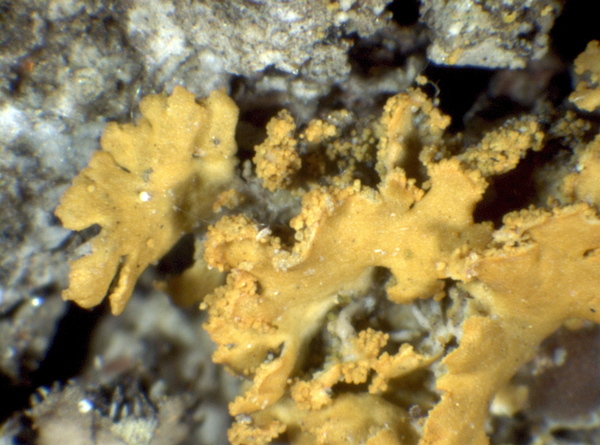

P.L.Nimis; Owner: Department of Life Sciences, University of Trieste
Herbarium: TSB (37026)
2008.02.25
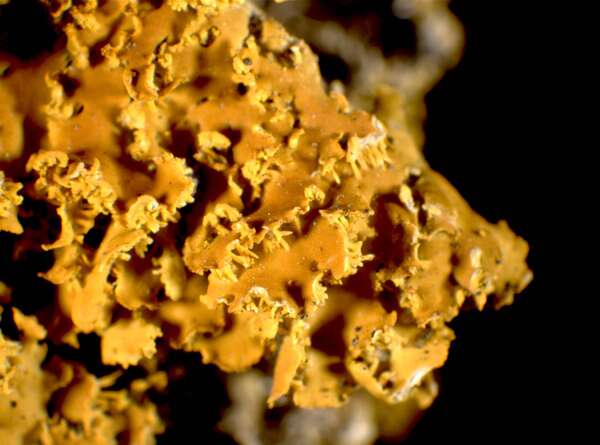

P.L. Nimis; Owner: Department of Life Sciences, University of Trieste
Herbarium: TSB (17995)
2001/12/03
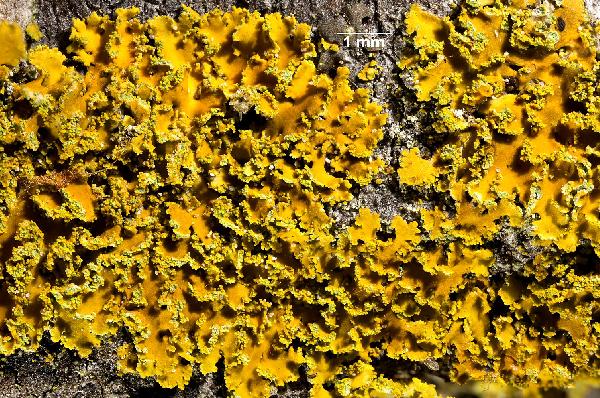
Ulrich Kirschbaum CC BY-SA 4.0 – Source: https://www.thm.de/lse/ulrich-kirschbaum/flechtenbilder
Central Europe; Germany: Bavaria. on Aesculus
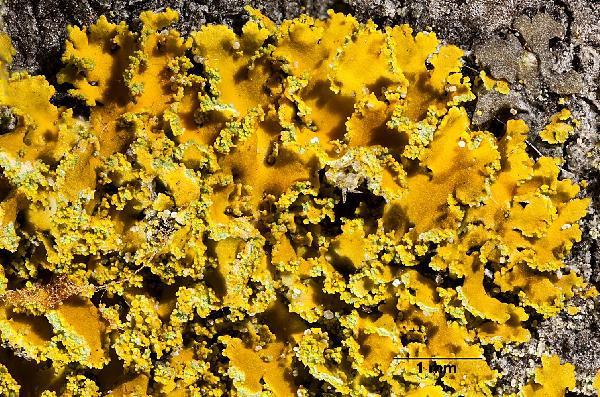
Ulrich Kirschbaum CC BY-SA 4.0 – Source: https://www.thm.de/lse/ulrich-kirschbaum/flechtenbilder
Central Europe; Germany: Bavaria. on Aesculus
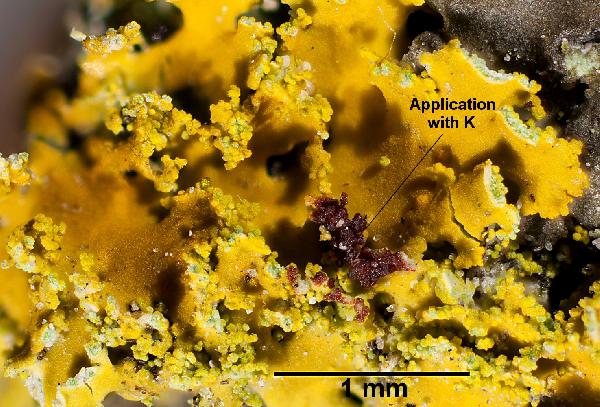
Ulrich Kirschbaum CC BY-SA 4.0 – Source: https://www.thm.de/lse/ulrich-kirschbaum/flechtenbilder
Central Europe; Germany: Bavaria. on Aesculus
Growth form: Foliose, narrow lobed
Substrata: bark
Photobiont: green algae other than Trentepohlia
Reproductive strategy: mainly asexual, by soredia, or soredia-like structures (e.g. blastidia)
Subcontinental: restricted to areas with a dry-subcontinental climate (e.g. dry Alpine valleys, parts of Mediterranean Italy)
Commonnes-rarity: (info)
Alpine belt: absent
Subalpine belt: absent
Oromediterranean belt: absent
Montane belt: very rare
Submediterranean belt: rare
Padanian area: absent
Humid submediterranean belt: absent
Humid mediterranean belt: absent
Dry mediterranean belt: absent

Predictive model
| Herbarium samples |


P.L.Nimis; Owner: Department of Life Sciences, University of Trieste
Herbarium: TSB (37026)
2008.02.25


P.L.Nimis; Owner: Department of Life Sciences, University of Trieste
Herbarium: TSB (37026)
2008.02.25


P.L. Nimis; Owner: Department of Life Sciences, University of Trieste
Herbarium: TSB (17995)
2001/12/03

Ulrich Kirschbaum CC BY-SA 4.0 – Source: https://www.thm.de/lse/ulrich-kirschbaum/flechtenbilder
Central Europe; Germany: Bavaria. on Aesculus

Ulrich Kirschbaum CC BY-SA 4.0 – Source: https://www.thm.de/lse/ulrich-kirschbaum/flechtenbilder
Central Europe; Germany: Bavaria. on Aesculus

 Index Fungorum
Index Fungorum
 GBIF
GBIF
